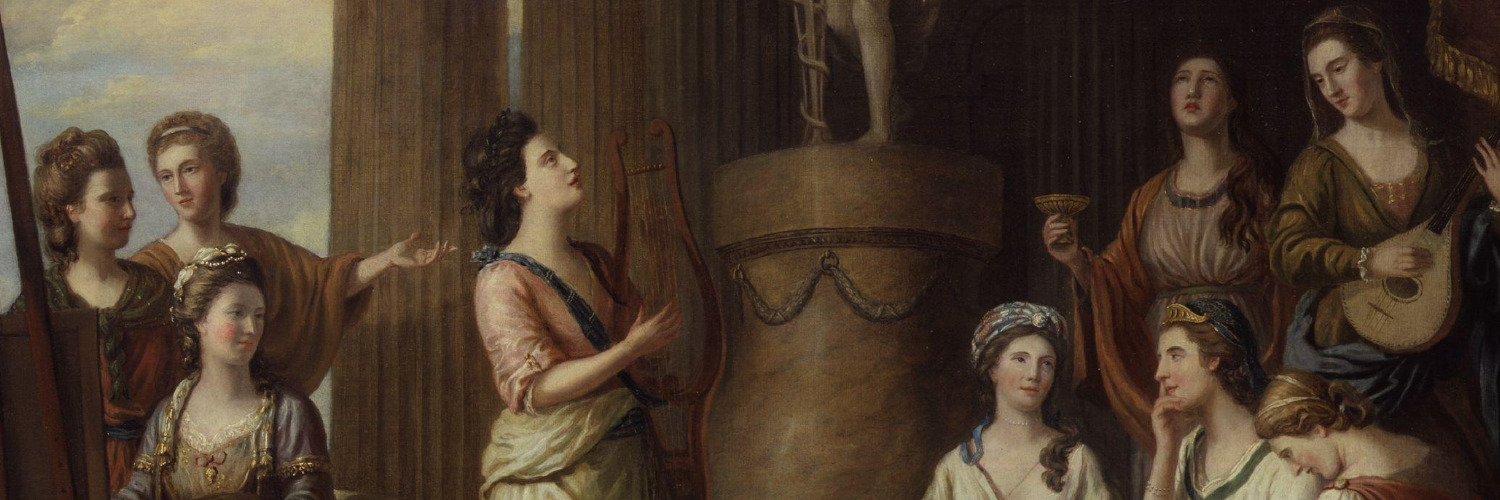- Physical form: One sheet folded into 2 leaves (18.5 x 23 cm)
- Cover [on fol 1v]: Miss Rickards / No 45 Middle Street / West Cliffe / Brighton
- PM [partial]: 801
- WM: A S[x]ACE / 1797
- SM: Misc MS 4348
I am much obliged to you for your two entertaining letters, & would not have been so long without answering them, if I had not been in hopes some opportunity would have presented itself, as none does, I must make use of the post. I am glad Brighton
presents to you so many scenes of entertainment, & above all that the grand object, health, is likely to be so well answered. I very willingly acknowledge myself a false prophet with respect to the cold autumnal blasts I threatened you with, & willingly confess that the weather has been [tear] (two or three days excepted) as must make the sea br[tear] delightful. We have not had one fire, & at this present mom[ent] (the twenty ninth of Sepr, at eight in the evening) I am sitting with the windows open, courting all the air I can get. We returned from our Parndon
excursion the very day you left Hampstead, & tho I had not expected to find you here, yet I could not help a feeling of disappointment, when I found I had missed you by so little. The scenes we have met with have been all of the quiet kind. At Bedford a quiet Batchelor’s house, a quiet & rather stupid town,
a flat country, & a river creeping slowly & quietly between its willowy banks. At Parndon perfect seclusion from all but the family we were with, quiet walks in the grounds, or lounging with a book by a piece of water, & tea in an alcove out of doors. Thus you see our respective amusements have suited our respective periods of life, Yours gay & full of
[fol 2r] bustle, Princes Plays Prospects & Promenades—ours retired & sober— And pray when do you intend to visit Church Row
again, we want your family very much & I cast many a longing look at the windows as I go by. If you do not make haste you will see a new house or two sprung up before your return. Mr Kinder & Sarah have spent a few days with me, Sarah is far from stout yet.
Charles is recovering his strength rather slowly, his waistcoats want a great deal of filling up yet. We have lost poor Mrs Mallet.
She was buried quite in a private manner yesterday. Her’s is a private loss, Mr Wakefield’s public & private.
Lucy has written a copy of verses on the occasion, which will appear in the next Magazine, as well as an account in the Obituary by my Brother.
How melancholy was the event of his death! Just liberated, restored to his friends, beginning life as it were anew with new plans & prospects & cut off by a week’s illness[.] Then Mr Arnold Wainwright has taken a lodging at Hackney on purpose to comfort the family, he is like a brother to them.
How often our sympathies are painfully exercised, but it is good for us it should be so— The Hoares & Bocketts are returned from the lakes, the Carrs have been in London a week to meet Mrs Ibetson, who has taken a house in
[fol 2v] Gower Street, where she means to spend three years with her two daughters for the advantage of masters &c. This will be a most desireable acquisition for Mrs Carr.
And so you are reading Sir Charles Grandison!
I think I was about your age when I read it first. The method of carrying on the story by letters, has certainly the fault you point out. Richardson, I believe, introduced it, & it has the advantage when well managed of giving an air of life & truth to the narrative & making the characters, as it were, show themselves. Sr Charles is so perfect & withal so cool, that I think he would have been well matched with Belinda, if she had not been born forty years too late for him.
You ask me how I like Thaliba.
I think there is a great deal of fancy in it, & beautiful description, a very defective plan, tho often beautiful sentiment, much Poetry & no verse—I think I could make use of some of his magic to transport myself to the Stein at Brighton, amongst you all, for one day, but hoys I do not like, & Post Chaises I cant afford, except my health required it, & thank heaven it does not, so we have shut up our travelling schemes for this year, & look forward to the quiet winter evenings, & their uninterrupted literary occupations——Mr Barbauld desires to be most affly remembered
[fol 1v] to yourself, & along with me to Mrs Rickards & Miss Hurry

